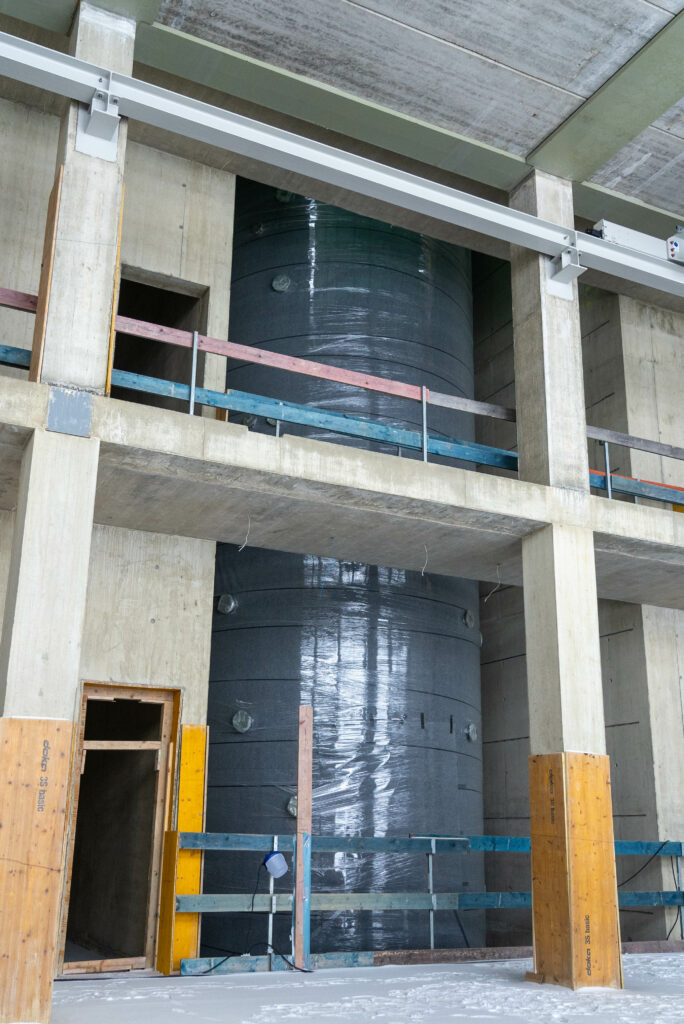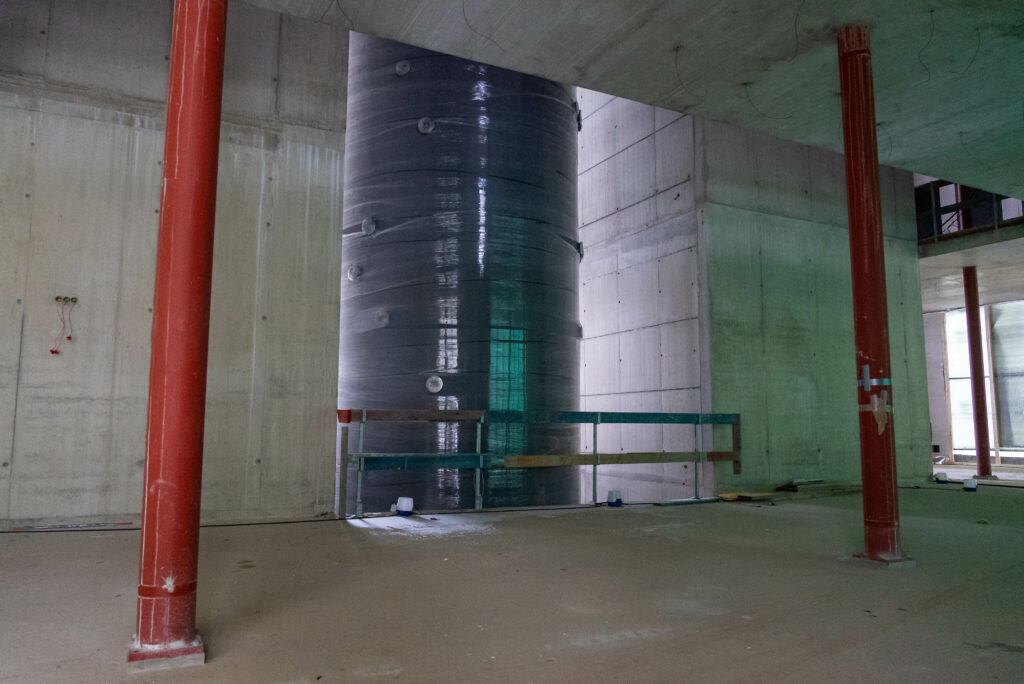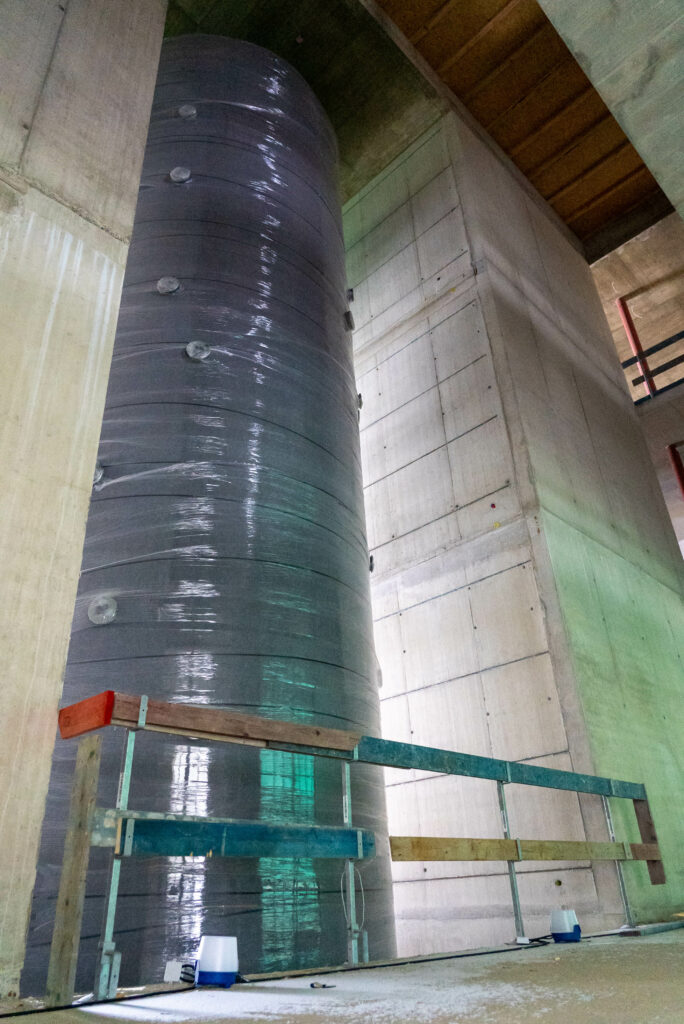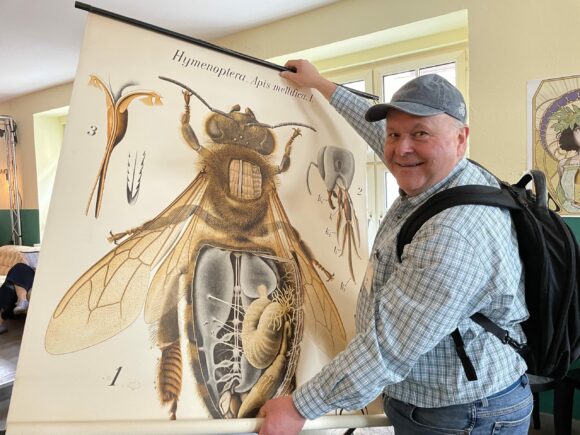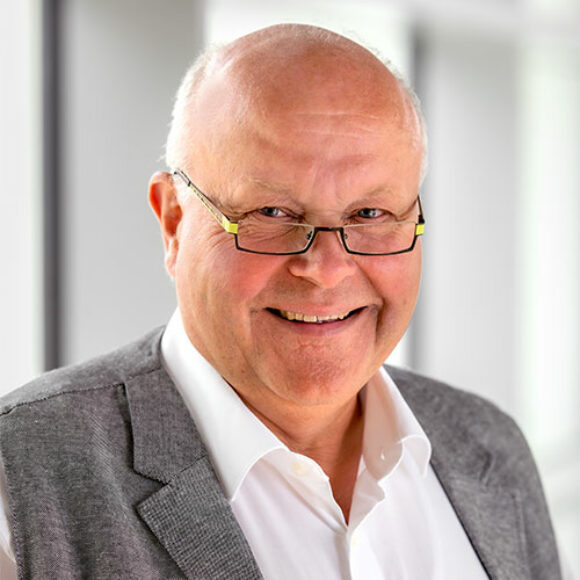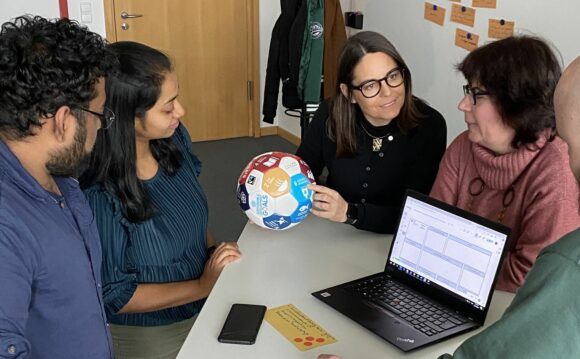While the new building of the Institute for Water and Energy Management (iwe) at Hof University of Applied Sciences is still under construction, the emerging building is already becoming the subject of innovative research. In the OUR-E project that has now been launched, researchers and company representatives are initially analyzing the centerpiece of the new institute building, the central large-scale heat storage system. The aim is to develop a user-friendly and, above all, efficient energy and heat control system for complex buildings with corresponding storage units, the basic principles of which can also be transferred to other comparable objects.

The new OUR-E (Optimized use of renewable energies) project team involves Hof University itself as well as the “Objekt- und Anlagenplanungsgesellschaft mbH (OAG mbH)” under the supervision of the “Projektträger Jülich (PtJ)”. Together they want to develop a user-friendly and model-based control system for complex buildings with central stratified storage.
We are particularly interested in the question of the extent to which models can predict building behavior and thus facilitate control – and whether this can actually be done in a practical and market-oriented manner.”
Prof. Dr. Robert Honke, Project Manager
Very demanding building operation
The complexity of the control system arises mainly from the inclusion of different energy sources in combination with extremely diverse building operation, which not only includes peak times with many employees or vacation periods, but is far more demanding: “In the new building, work, lecture and laboratory operations will overlap so strongly and irregularly that there will be strongly fluctuating thermal balances,” the project manager continues.
Focus on energy systems with thermal storage
But how does one want to accomplish this task now? “The implementation and development of control models is to be carried out through the standardization of interfaces and methodologies, as well as with thoroughly commercial building control technology,” says Eric Priller, managing director of OAG mbH.
In concrete terms, this means: we take a close look at how the internal plant technology, the storage system and the building relate to each other and incorporate predictive algorithms for control here.”
Robin Fick, responsible for system simulation
The focus of the upcoming research, he said, is on energy systems with central thermal storage elements – such as large stratified storage tanks – that allow for the efficient and simultaneous integration of different renewable energy sources.

Hydraulic network on the research side: Here, the integration of the diverse renewable energy suppliers and consumers takes place, among other things, with the help of a predictive control of the internal building hydraulics. Source: H+S Engineers;
Building site as an ideal “real laboratory
“The institute building currently under construction, with its 150 m³ large-scale heat storage tank, functions here as a kind of real laboratory and is perfectly suited to underline the model character of the project. Companies can then apply the knowledge gained directly to their future construction projects,” says project manager Prof. Honke, explaining the research approach.
The OUR-E project will run until December 31, 2025 and is funded under the 7th Energy Research Program of the German Federal Ministry of Economics and Climate Protection.
